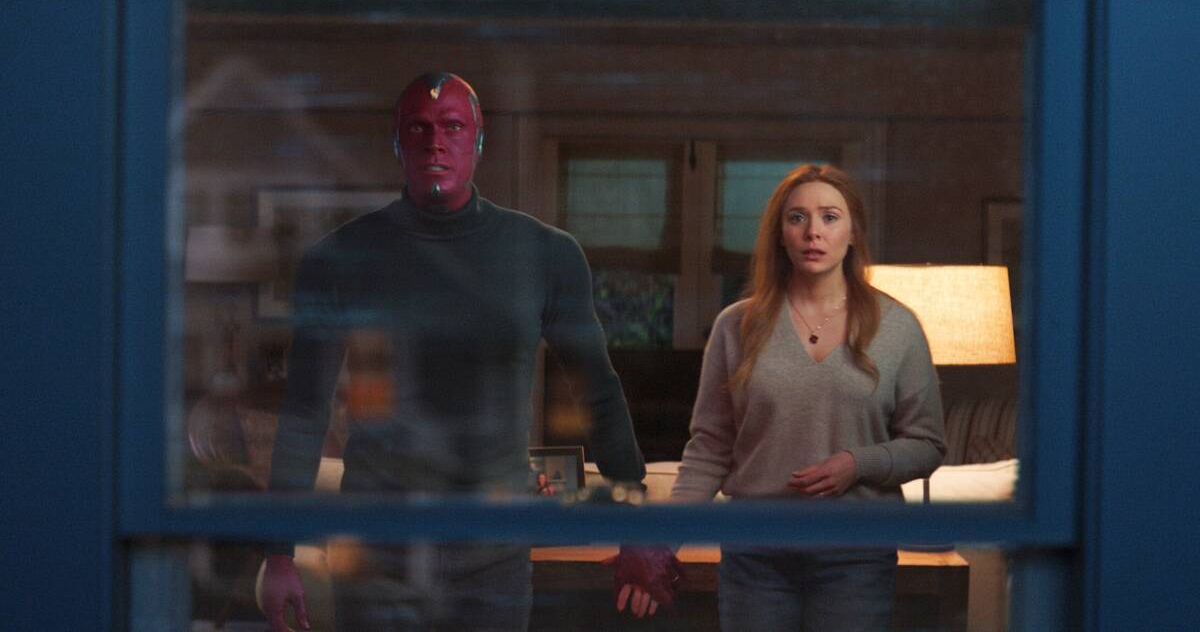Even though WandaVision has come to a close and wrapped up more or less of all its loose ends, there are still many head-scratchers left. Like, where did White Vision go, will he be appearing again, will Monica join Nick Fury's secret space program, and above all, that mind-boggling post-credit scene. Is Wanda aware that she is astral projecting herself or is her alter ego a villainous entity?
In the post-credits scene of the finale episode, we saw Wanda living in a serene, mountainous area, all by herself and going through her daily chores. But inside her house, her astral projection, in the form of the Scarlet Witch is riffling through the Darkhold. Now, Agatha Harkness had heavily hinted that by embracing the powers of the Scarlet Witch, Wanda had unleashed something. Was this "something" so powerful that it was astral projecting itself without Wanda knowing what was happening? Well, series creator Jac Schaeffer has, more or less, confirmed what is really happening in the scene.
"There's not a whole lot that I can say. What I can say is, I love the duality of it. I love the real Wanda, sitting on her porch, making a cup of tea, doing her ruminating and reflecting. And the super-lady in the back room who is astral-projecting and functioning at a level that we have yet to understand. I love that."
While that doesn't explain the implications of the scene, it does confirm that Wanda is doing all this willingly and is perhaps going through the Darkhold to find a way to bring back her kids.
In the finale episode, Wanda decided to end the Hex covering Westview and erase her dream life out of existence too, which meant losing Vision and her twins. Even though the ending of Wanda and Vision's story was a real tear-jerker, it gave Wanda the chance to properly say goodbye to the person she loves- an opportunity she didn't get in Avengers: Infinity War.
"For the whole season it was like, how does she do this? How, how, how, how, how?" said Schaeffer. "And really, the question is, why? What in her personhood, what in her past, led to this moment? Let's explore that, unpack that and look at the full human before us. And still have it be entertaining, with all the bells and whistles and all the blasty-blasty, all in one thing."
"I don't know if she got what she deserved. She got to say goodbye on her own terms. That's what's important to me. Everything she's been through has been forced upon her, and things have been wrenched from her. It's all been in this frenzied, stakes-of-the-universe way. She has to make big decisions with no time for processing. This goodbye moment is her choice and she got to do it in her own way. That is what she needed to process everything she's been through and reach acceptance."
By putting characters like Wanda, Agatha, Monica, and Darcy in the centre of the story, Schaeffer wanted to tell stories that mostly side-lined in superhero franchises and "put authentic women onscreen."
"It was very important to me to put authentic women onscreen. I want to see myself and my friends and my sisters and my mom and my aunts. I want to see nuanced portrayals of their exterior and interior lives. For me, personally, this was the first time that I was running a [writers'] room, and it was intimidating to step into a leadership role. But I found myself able to meet the challenge, and I enjoyed it so much. Everyone was very motivated to push the ball forward in terms of representation and visibility of women and people of color. I'm very proud of that. It felt important and necessary," she said. All episodes of WandaVision are currently streaming on Disney+. The news comes to us via The New York Times

